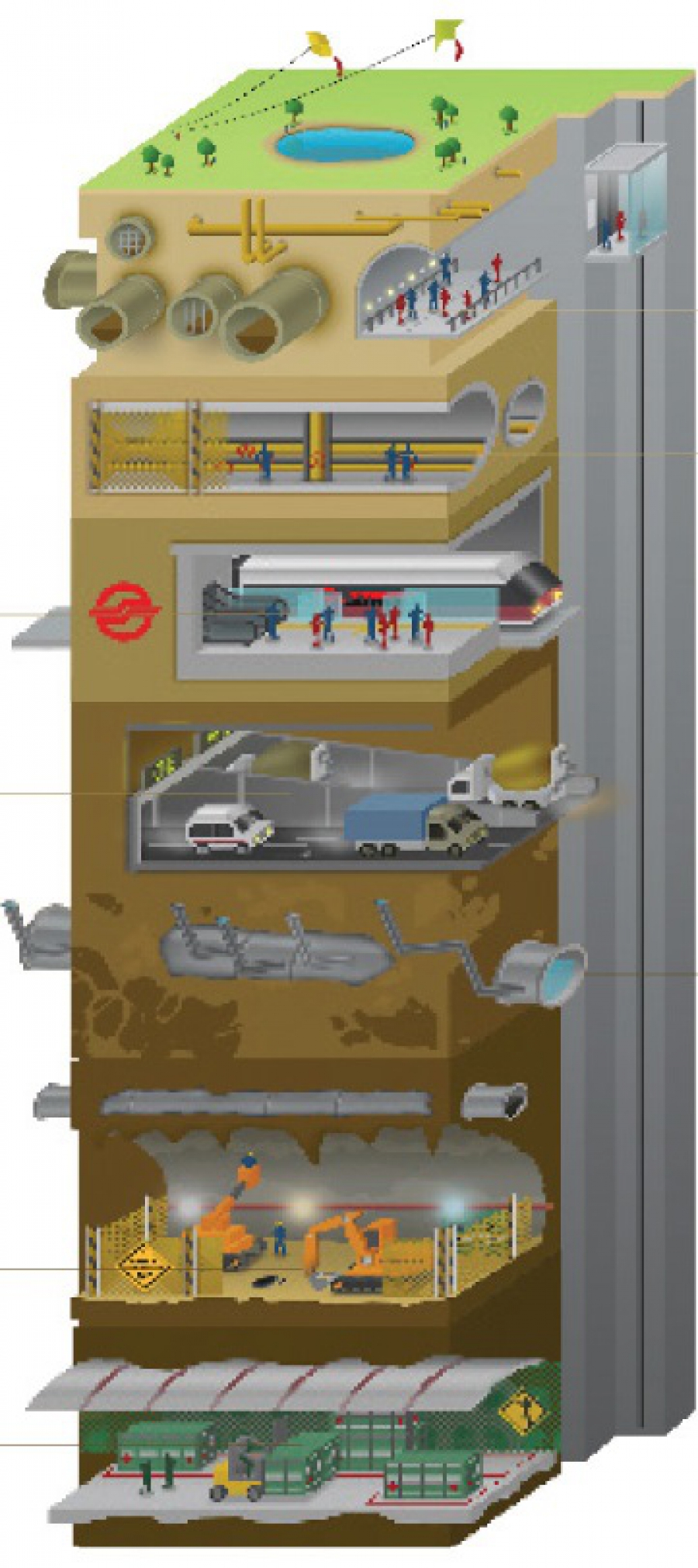In Singapore, there have been several important developments in pushing the use of underground space by the government. In early 2015, the government passed new legislations on ownership and acquisition of subterranean space intended to facilitate the development of underground space. The Ministry of National Development completed an important benchmarking study that aimed to develop a holistic and comprehensive framework to enable more extensive use of underground space by establishing guidelines for underground space planning and development. The benchmarking included a quantitative comparison study of underground planning and development – Singapore vs international, identification of best practices in policy, legal, standards, and case studies, identification of gaps and improvements, and developing standards and codes of practice, and developing a format for underground master plan.Important guidelines developed include a format for underground master plan and a Cost-Benefit-Analysis model.
Under the Land and Livability National Innovation Challenge, the government announced the Second Call for R&D Proposals, with a focus on two themes: a) reducing the cost of underground construction; and b) improving human comfort and wellbeing in underground environment. In August 2015, JTC Corporation awarded a contractfor a feasibility study on an extensive underground goods mover system that links several industrial estates being planned (potentially in rock caverns) to the future Tuas Port. In October 2015, the Public Utilities Board called tender for the feasibility study of a massive underground reservoir (up to 100 mil m3) and flood control system coupled with pumped storage. The Geology Office under the Building and Construction Authority continued its extensive geological investigations aimed at mapping out the deep underground bed rock resources that are required for eventually developing Singapore’s underground master plan.
